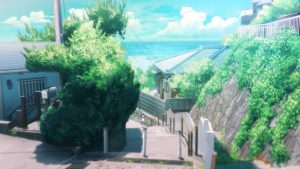 I rather enjoyed the first episode of Kakushigoto, an adaption of Kumeta Kouji’s manga. Kumeta is the author of Sayonara, Zetsubou-sensei, so if you know that series you have an idea of the comic style. And if you’ve seen Uchouten Kazoku you have an idea of the visual style, because he did the character designs for that series. This premiere did a lot of things right, but a problem for me is that the whole premise is highly dubious – just how much of a problem that turns out to be remains to be seen.
I rather enjoyed the first episode of Kakushigoto, an adaption of Kumeta Kouji’s manga. Kumeta is the author of Sayonara, Zetsubou-sensei, so if you know that series you have an idea of the comic style. And if you’ve seen Uchouten Kazoku you have an idea of the visual style, because he did the character designs for that series. This premiere did a lot of things right, but a problem for me is that the whole premise is highly dubious – just how much of a problem that turns out to be remains to be seen.
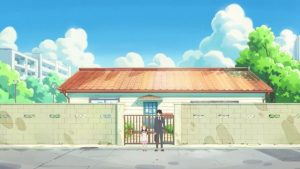 Any story built on puns, on the other hand, has scored some brownie points with me. And Kakushigoto is full of puns and in-jokes, starting with the title. It’s a three-level play on words – “kakushigoto” means “secret” in Japanese, kaku shigoto also means writing work, and the protagonist’s name os Kakushi Goto. You also had a guest appearance by a thinly-disguised Fujita Kazuhiro (Ushio and Tora, Karakuri Circus) pontificating on the nature of dark fantasy manga, and a bunch of inside jokes about Tokyo neighborhoods and class, and the manga industry.
Any story built on puns, on the other hand, has scored some brownie points with me. And Kakushigoto is full of puns and in-jokes, starting with the title. It’s a three-level play on words – “kakushigoto” means “secret” in Japanese, kaku shigoto also means writing work, and the protagonist’s name os Kakushi Goto. You also had a guest appearance by a thinly-disguised Fujita Kazuhiro (Ushio and Tora, Karakuri Circus) pontificating on the nature of dark fantasy manga, and a bunch of inside jokes about Tokyo neighborhoods and class, and the manga industry.
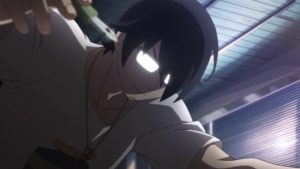 The hill this house is built on is that the title character is a mangaka who draws ecchi comedy series for a living, and is desperate to keep his daughter Hime from finding out (which the prologue seems to reveal she will when she turns 18). To facilitate this charade, every morning he leaves his house in Shibuya (working-class, socially diverse) in a suit, then changes into slacker clothes and walks up the hill to a workspace in trendy, hipster Meguro. As to where Hime’s mother is we’re not yet told, but since this is manga I’m assuming she’s permanently out of the picture for the most obvious reason.
The hill this house is built on is that the title character is a mangaka who draws ecchi comedy series for a living, and is desperate to keep his daughter Hime from finding out (which the prologue seems to reveal she will when she turns 18). To facilitate this charade, every morning he leaves his house in Shibuya (working-class, socially diverse) in a suit, then changes into slacker clothes and walks up the hill to a workspace in trendy, hipster Meguro. As to where Hime’s mother is we’re not yet told, but since this is manga I’m assuming she’s permanently out of the picture for the most obvious reason.
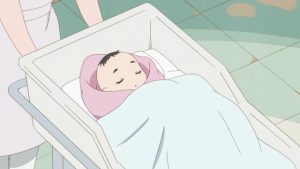 This is my main quibble, because the whole idea of this deception seems kind of stupid. The reality on the ground that I’ve seen in Japan is that manga artists are fairly well-respected (even if they’re not “mango”). Far be it for me to contradict Kumeta-sensei on the subject as he’d obviously know better, but – really? The whole concept of keeping this from his daughter for 18 years seems kinda dumb for me, a wafer-thin pretext for a bunch of puns, inside jokes and gag comedy. But the $64,000 question, of course, is this: if those are funny enough, does it matter?
This is my main quibble, because the whole idea of this deception seems kind of stupid. The reality on the ground that I’ve seen in Japan is that manga artists are fairly well-respected (even if they’re not “mango”). Far be it for me to contradict Kumeta-sensei on the subject as he’d obviously know better, but – really? The whole concept of keeping this from his daughter for 18 years seems kinda dumb for me, a wafer-thin pretext for a bunch of puns, inside jokes and gag comedy. But the $64,000 question, of course, is this: if those are funny enough, does it matter?
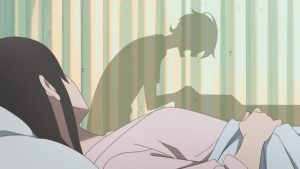 Maybe not. And I don’t know yet whether they’re funny enough, though for one episode the humor worked quite well. There’s a lot of inside baseball stuff here in addition to Fujita-sensei’s appearance – like the bit about “wearable” T-shirts and indeed the mango thing (a portmanteau of “manga” and bungo” – which I confess is a term I’d never heard before). I also liked the line about the editor’s job being to “make sure the author can’t write what he wants” – the eternal struggle is indeed eternal… And the “oshopi” gag was a nice dig at the hipster crowds, complete with Starbucks (in Japan, unlike the West, Starbucks has not yet transitioned from hipster to lame and corporate).
Maybe not. And I don’t know yet whether they’re funny enough, though for one episode the humor worked quite well. There’s a lot of inside baseball stuff here in addition to Fujita-sensei’s appearance – like the bit about “wearable” T-shirts and indeed the mango thing (a portmanteau of “manga” and bungo” – which I confess is a term I’d never heard before). I also liked the line about the editor’s job being to “make sure the author can’t write what he wants” – the eternal struggle is indeed eternal… And the “oshopi” gag was a nice dig at the hipster crowds, complete with Starbucks (in Japan, unlike the West, Starbucks has not yet transitioned from hipster to lame and corporate).
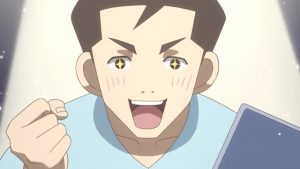 So – we’ll see. The execution is fine – I’m not that nuts for Kamiya Hiroshi in most roles, and he wouldn’t have been my choice here. The art style is pure Kumeta and thus really interesting, though the overall production is nothing special (I did like the ED – a remake of Ohtaki Eiichi’s 1981 hit Kimi wa Tennen Shoku – a lot). But there’s enough to Kakushigoto to keep me around, if it weren’t for not buying into the premise itself. Maybe that won’t matter once the series settles in – I rather hope that’s the case, because it’s looking like a very lean anime season.
So – we’ll see. The execution is fine – I’m not that nuts for Kamiya Hiroshi in most roles, and he wouldn’t have been my choice here. The art style is pure Kumeta and thus really interesting, though the overall production is nothing special (I did like the ED – a remake of Ohtaki Eiichi’s 1981 hit Kimi wa Tennen Shoku – a lot). But there’s enough to Kakushigoto to keep me around, if it weren’t for not buying into the premise itself. Maybe that won’t matter once the series settles in – I rather hope that’s the case, because it’s looking like a very lean anime season.







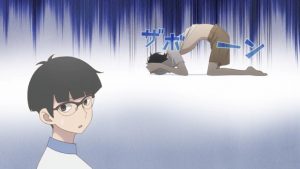
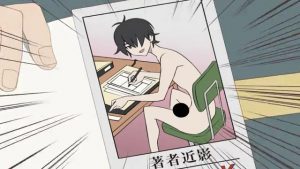
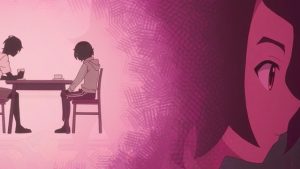

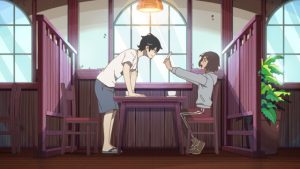
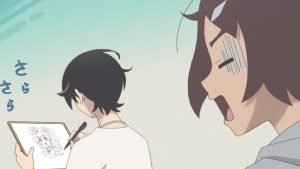

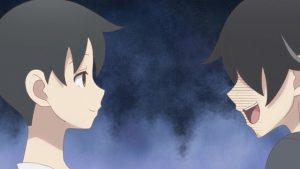
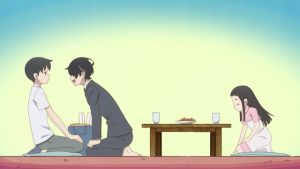
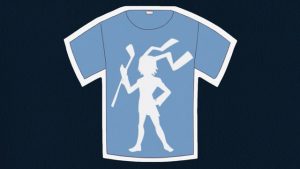


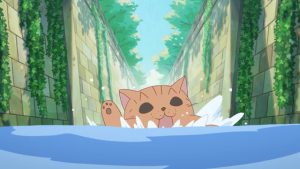
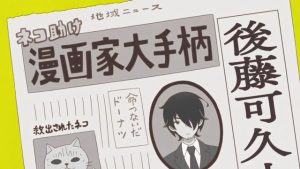
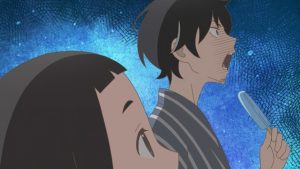

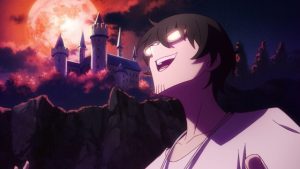
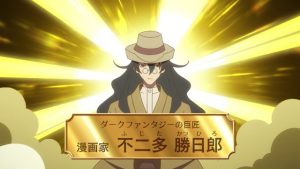
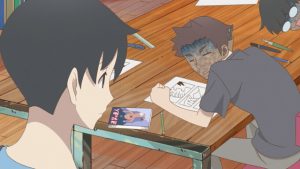
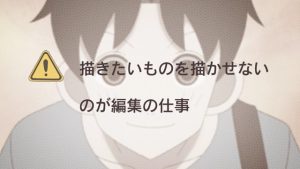

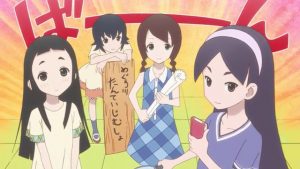
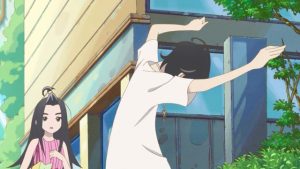
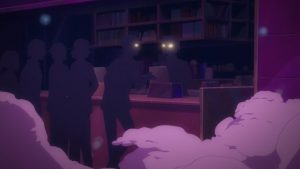
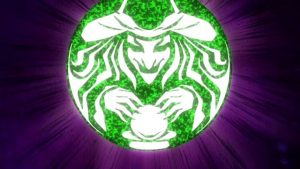
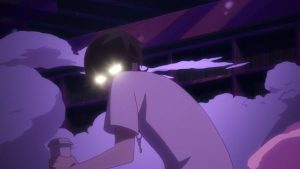
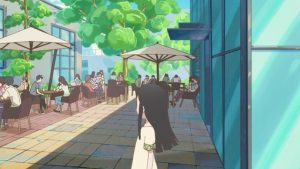

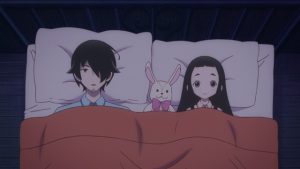


leongsh
April 3, 2020 at 10:30 pmThis is a very much less manic version of “Sayonara, Zetsubou-sensei”. Most everything is the same but it’s not nihilistic like “Sayonara, Zetsubou-sensei” and thus, less need to be surreal and manic. I daresay it’s more like a celebration of life in comparison. The wordplay of Kumeta Kouji is his major selling point. The translators have their work cut out for them. This first episode shows that they are prepared for it.
Out of the four first episodes that I have watched so far, this is the most engaging to me.